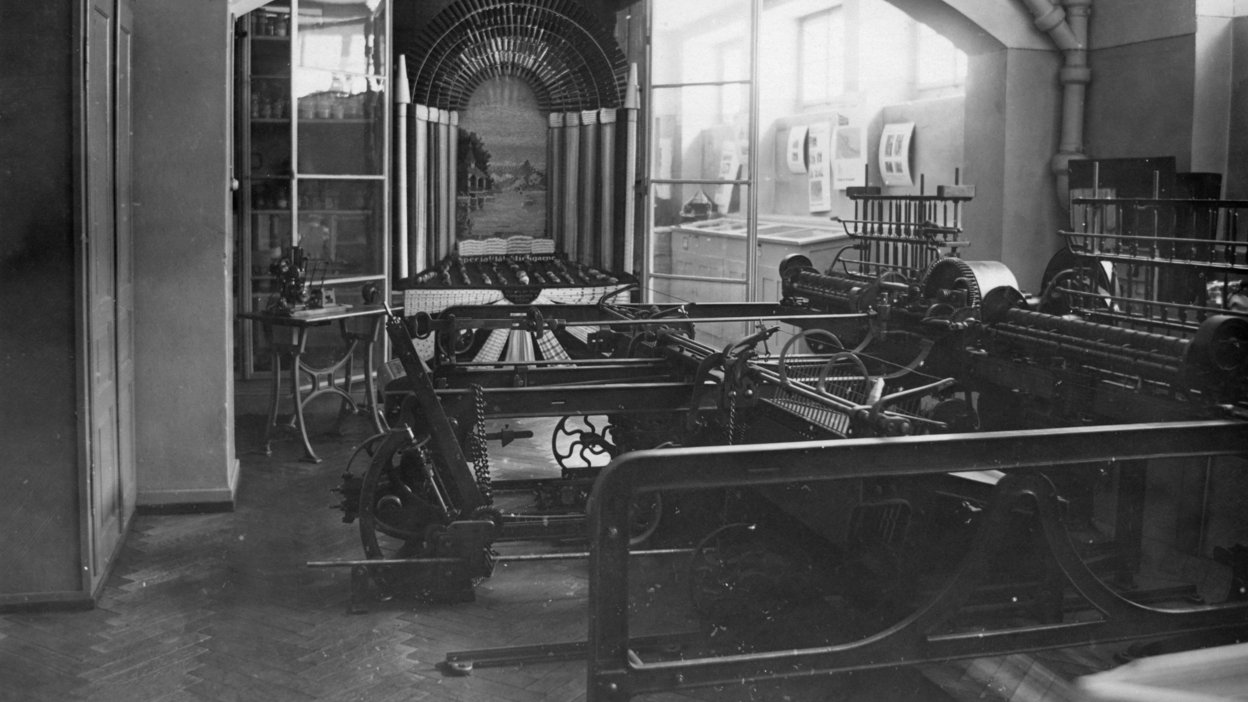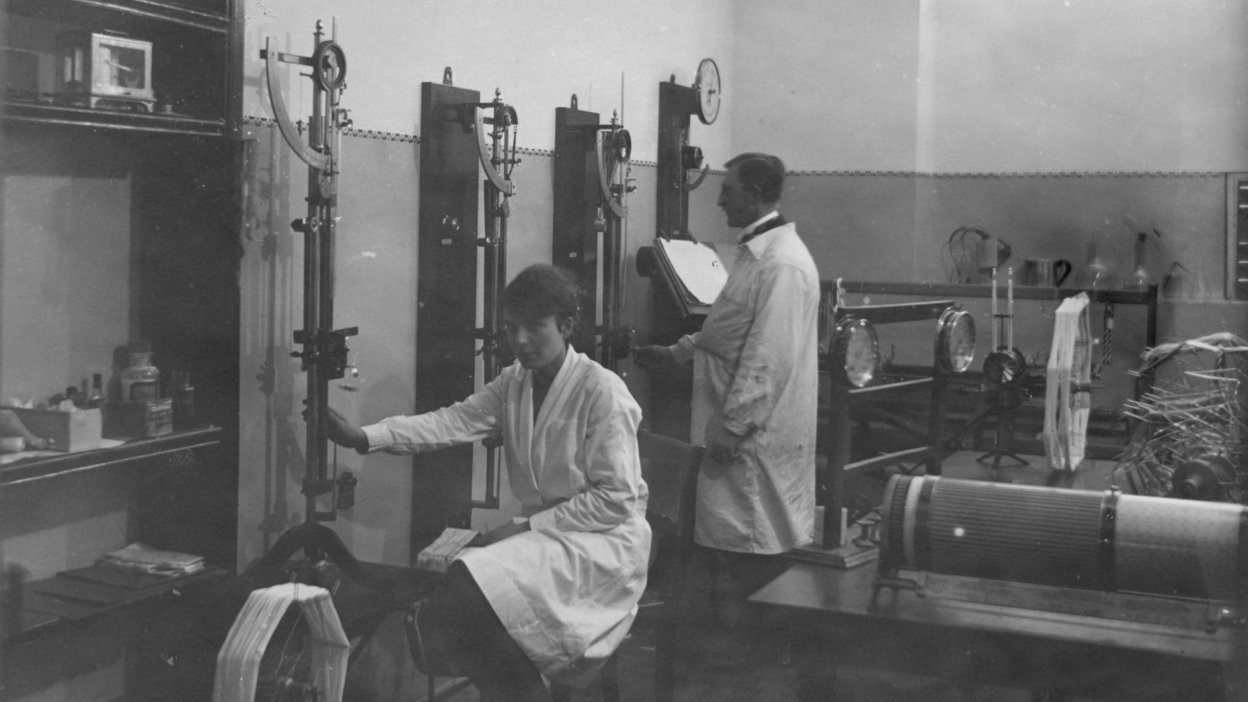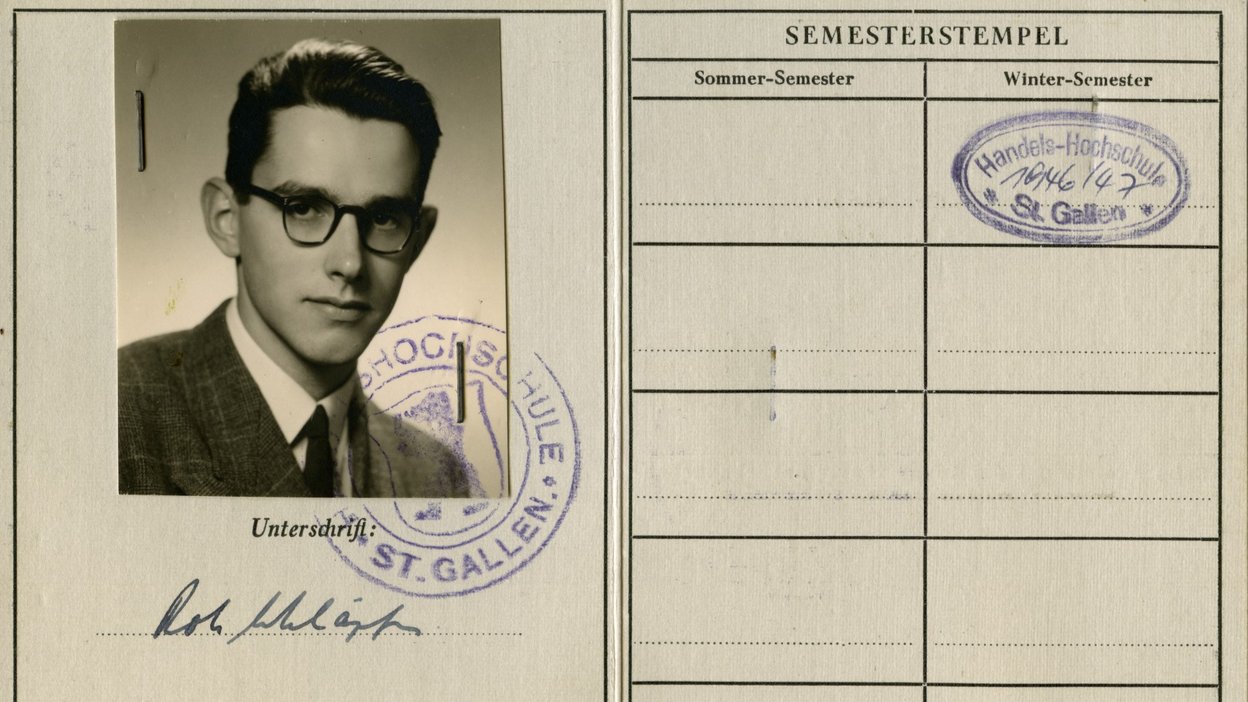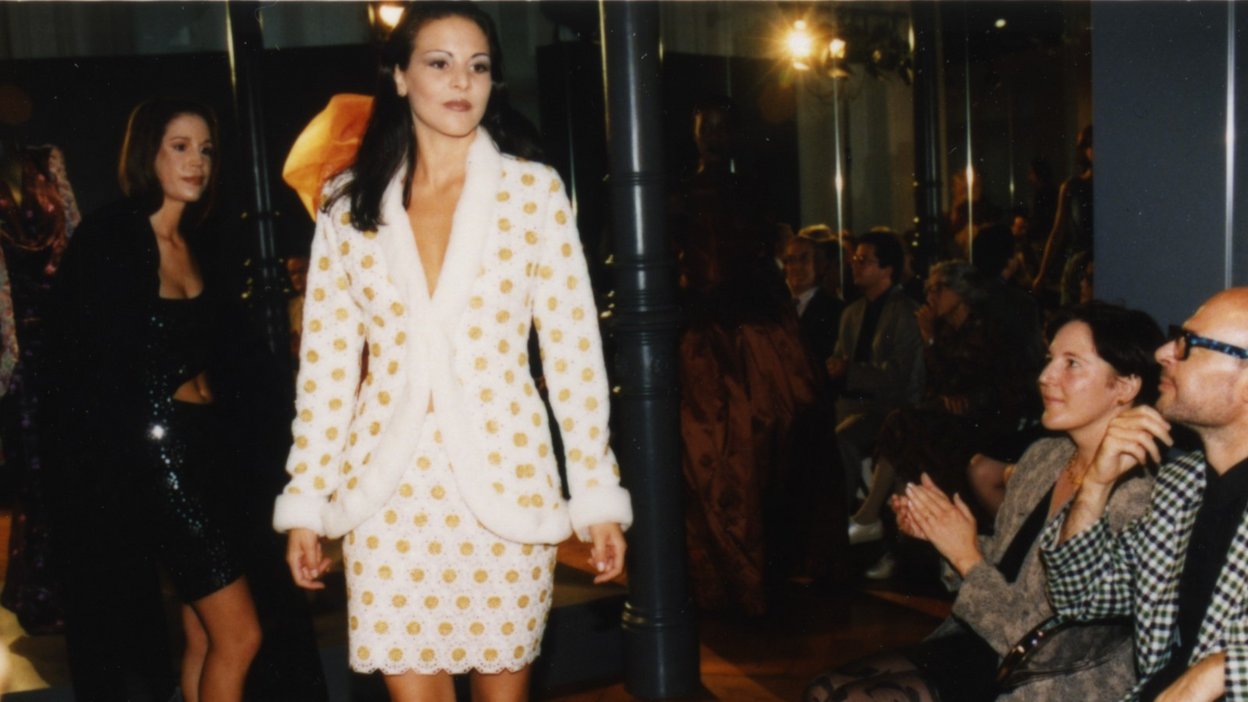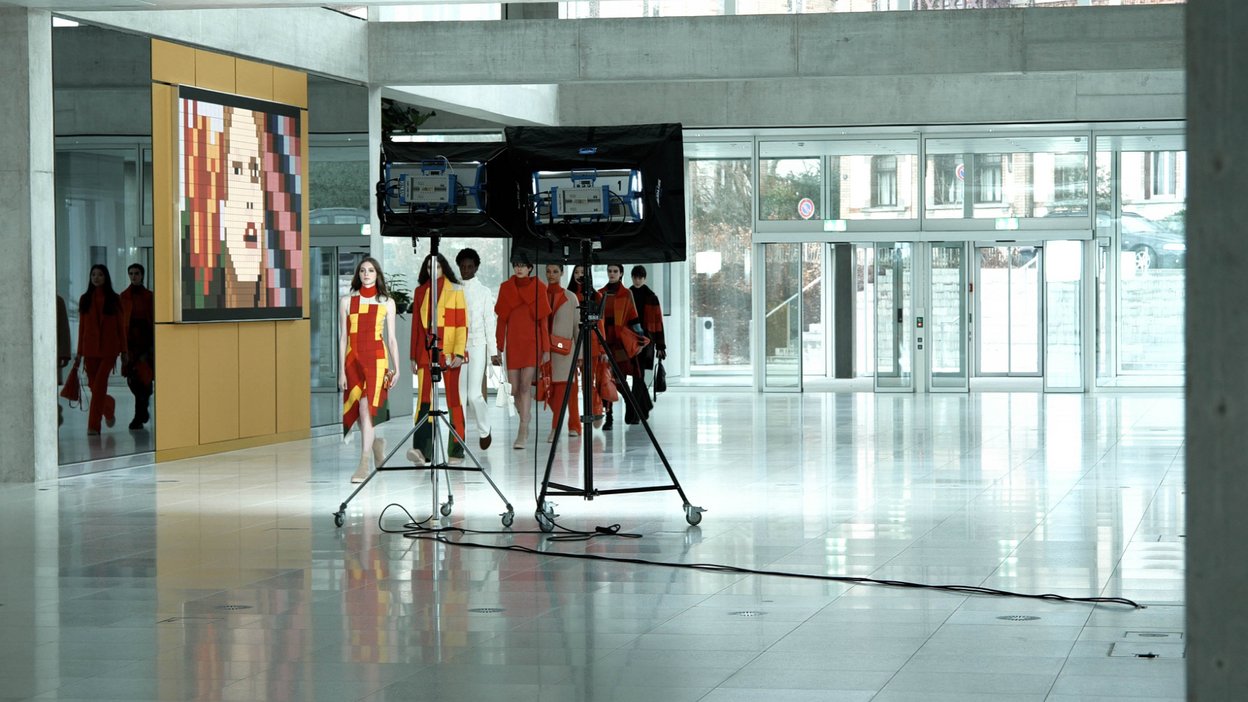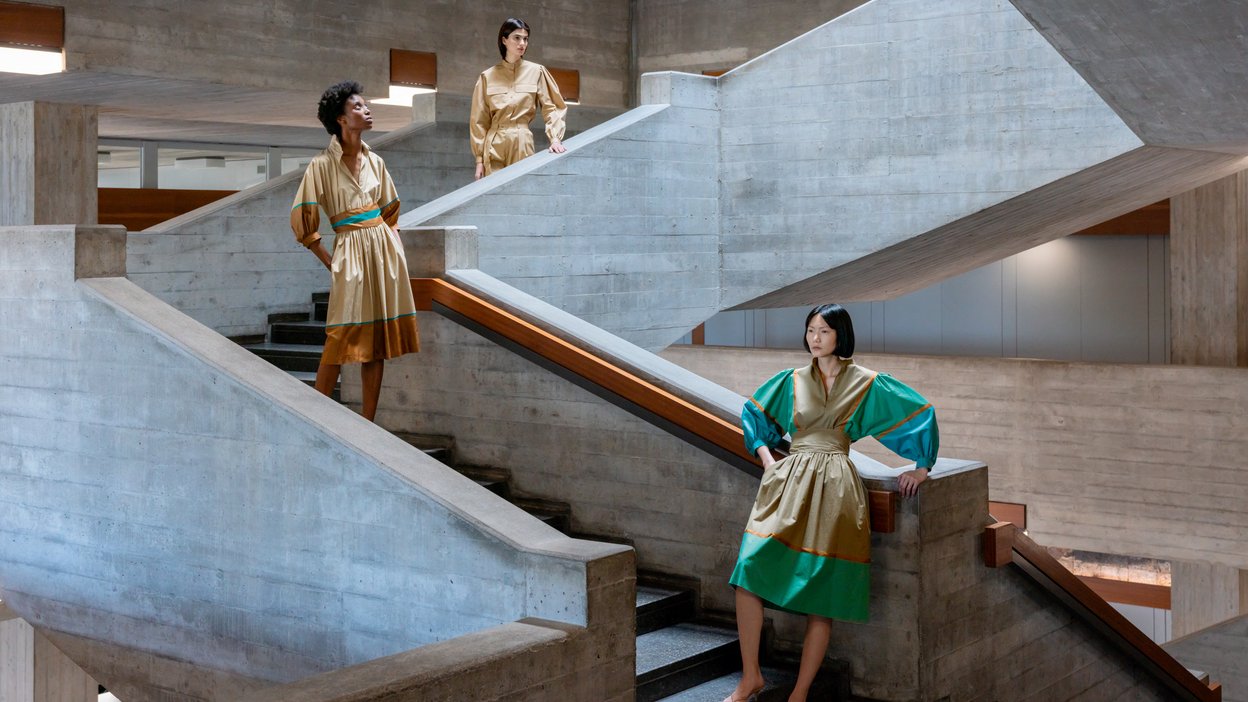Background - 24.11.2023 - 13:30
A long partnership: Eastern Switzerland's textile industry and its university
In its anniversary year, the University of St.Gallen is integrating into its logo an embroidered pattern. The motif goes back to a creation by the St.Gallen textile company Labhard & Co. from around 1920. It is a tribute to the historical roots of HSG, whose foundation is closely linked to the history of the textile industry in Eastern Switzerland.
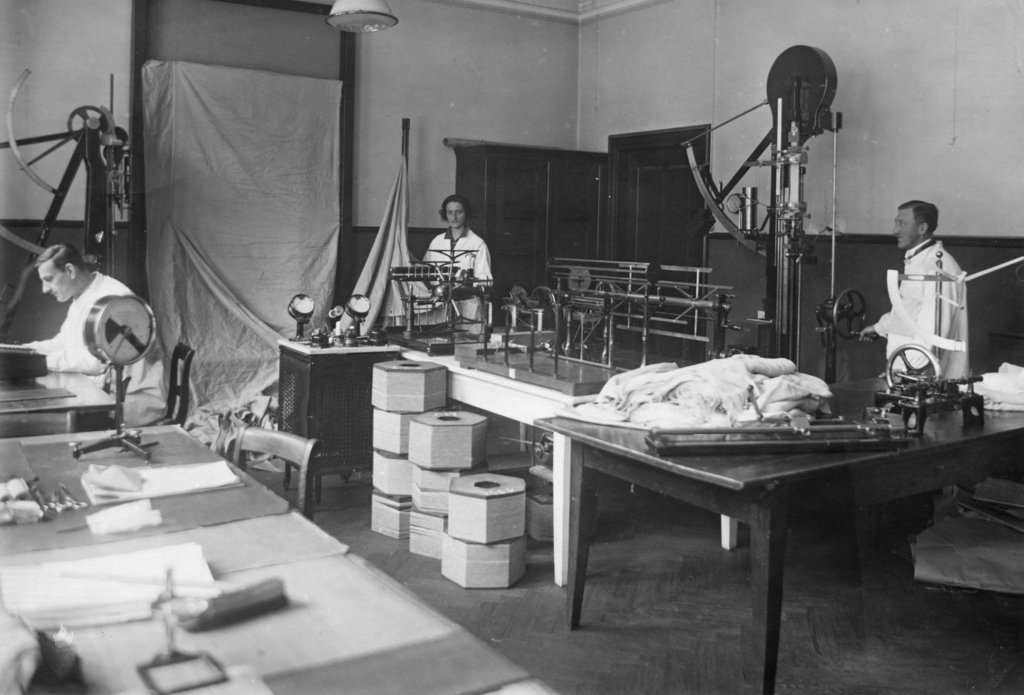
HSG was founded 125 years ago by representatives of the local textile industry. There is still a special connection between Akris and HSG today.
The establishment of the Business Academy in 1898 was just one of many schools founded during this period. The weaving school in Wattwil, several embroidery schools in Grabs, Degersheim, Kirchberg and Rheineck and the "Drawing School for Industry and Trade" in St.Gallen were also established around the turn of the century. These educational institutions were jointly supported by municipalities and industrialists and ultimately all pursued the goal of providing the textile industry in Eastern Switzerland with a decisive locational advantage in the form of well-trained skilled workers.
Founded by representatives of the local textile industry
The Grand Council commission, which discussed the establishment of a "Higher School of Commerce, Transport and Administration" 125 years ago, argued: "More and more, our major merchants are emphasising that the educational path they have taken so far is not marginal for managing large businesses with extensive connections all over the world, and that this also requires knowledge of customs and trade legislation [...], a certain familiarity with legal issues and an insight into Economics." The nine members of the commission included three well-known textile entrepreneurs: Heinrich Cunz, co-owner of the textile printing company Cunz, Wettler and Forrer (later Textilwerke Blumenegg AG) in Rorschach, Anton Messmer, merchant and owner of an embroidery business in Bazenheid, and Emil Schubiger, founder of the Schubiger silk weaving mill in Uznach.
They were joined by National Councillor Karl Emil Wild, architect from St.Gallen and President of the Central Association of the Embroidery Industry. He was the founder and director of the St.Gallen Industrial and Commercial Museum (now the St.Gallen Textile Museum), which opened in 1878, with its associated school for embroidery draughtsmen and women. Wild was an important supporter of the St.Gallen Business Academy and eventually became its first director. After all, the representatives of the textile industry were not only politically involved in the founding of HSG, but also financially. The costs of running the school were shared between the federal government, the canton and city of St.Gallen and the commercial directorate.
Expertise and "laboratory" for the textile industry in Eastern Switzerland
Consequently, the textile industry was important in the curriculum of the early Business Academy. In 1903, for example, the subject of "merchandise science" focused on the processing of wool and silk, the production of chemical fibres, bleaching and dyeing processes and the manufacturing of lace. To illustrate this, the course participants visited the embroidery export shops Otto Alder & Co. and Hirschfeld & Co. in St.Gallen. The topic featured even more prominently in the programme of Public Lectures, which aimed to provide executive education for the urban middle classes. In 1904, for example, three lectures/seminars were offered on the textile industry: "Economic geography. The production areas of cotton and silk" (Heinrich Schmidt), "The development of lace and its relationship to machine embroidery" (Karl Emil Wild) and "Chemistry in its application to the textile industry" (Eduard Steiger).
An "Experimental Centre for the Textile Industry" was also set up within the newly founded Business Academy. Experiments were carried out in the school's laboratories under the direction of chemist Johann Anastasius Jovanovits in order to further develop the processes for processing various textile and leather goods. The local textile industry in particular benefited from the results. In 1937, the testing institute was taken over by the federal government and incorporated into the Swiss Federal Laboratories for Materials Testing and Research (EMPA). However, the co-operation with the commercial college continued, particularly in the area of training textile specialists and the development of technical standards. In 1947, the "Höhere Textilfachschule St.Gallen" was established under the umbrella of the Business School of St.Gallen, which offered further education courses for dyeing specialists and managers from the textile industry, among others. To celebrate its opening, it was stated: "In any case, the governing bodies of the commercial college [...] are looking forward to putting their energies even more strongly than before [...] into the service of the textile industry, which remains vital to the economy of Eastern Switzerland."
Young talent for family businesses at home and abroad
In the course of the HSG's 125-year history, many representatives of the textile industry in Eastern Switzerland are indeed likely to have completed their training or executive education at the Business School of St.Gallen. Most of the companies were continued within the family, so that the theoretical education at HSG was an obvious complement to the practical vocational training in the parental business. One notable graduate is Leiv Helly-Hansen, the heir to the company of the same name in Norway, who enrolled for a degree course, (academic) programme; studying; higher education in St.Gallen in 1936. After attending the commercial high school in Oslo, he had already gained his first professional experience in his father's company and wanted to round off his education at HSG "in order to be well prepared to enter commercial practice", as he wrote in his application.
Robert Schläpfer, born in 1926, followed a similar educational path. After completing his commercial baccalaureate qualification at the cantonal school in St.Gallen, he attended an evening course at the Eastern Switzerland Embroidery School and assisted his father Jakob Schläpfer with foreign language business correspondence on the side. In 1946/47, he enrolled at the Business School of St.Gallen, but dropped out of the programme after two semesters at his father's request in order to work full-time in his parents' business. Robert Schläpfer and his wife Lisbet Schläpfer-Bucher were important pioneers in the reorganisation of the struggling St.Gallen embroidery industry after the Second World War. By developing new production techniques (such as the mechanical attachment of sequins, the manufacture of colourful printed silk fabrics and the fixing of Swarovski stones), the two opened up a new sales market in the luxury goods sector with the family business Jakob Schlaepfer and Cie. Renowned fashion houses in Switzerland and abroad, such as Hubert de Givenchy, Chanel, Dior, Yves Saint Laurent, Giorgio Armani and Akris, are still customers of the St.Gallen textile products today.
Successful collaboration to this day
There is a very special connection between the St.Gallen family business Akris and HSG. HSG alumnus Peter Kriemler and his brother Albert Kriemler are the third generation to run the business, which emerged from an apron sewing workshop, and see themselves as the fashion house in which fabric, the city and the University are rooted. In recent years, the architecture at the HSG campus has repeatedly served as a stage for the Akris collections. Since October this year, extraordinary photo prints by the internationally renowned photographer Iwan Baan have been hanging in the HSG's Förderer Building. The photo exhibition "100 years Akris – 125 years University of St.Gallen" invites you to discover and view it until the end of the year.
Janett Seewer, University Archive
Images: University Archive and Iwan Baan (Akris photography)
Title image: Swiss Research Centre on the premises of HSG, physical testing room for yarn and fabrics (around 1930)
